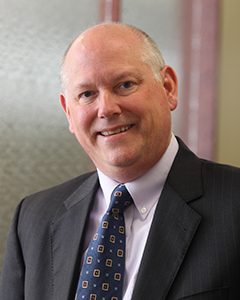SIMPLE IRA-to-401(k) Mid-Year Switch Gets Easier in 2024

A frequently asked question by small business owners who sponsor savings incentive match plans for employees (SIMPLE) IRA plans is, “Can I terminate my SIMPLE IRA plan and start a 401(k) plan mid-year?” It’s a straightforward question that, currently, has a problematic answer due to the “exclusive plan rule,” which says the SIMPLE IRA plan must be the only plan the business maintains for the year. Problem solved—thanks to the SECURE Act 2.0 of 2022 (SECURE 2.0) for plan years beginning after December 31, 2023.
For the 2024 plan year and later plan years, employers may replace their SIMPLE IRA plans mid-year with what we will call an “eligible 401(k) replacement plan.” However, the annual deferral limits are different for the two plan types. Therefore, under the new rules, the participant’s annual deferral limit will be prorated (by day) between the SIMPLE IRA plan and the eligible 401(k) replacement plan for the year.
An eligible 401(k) replacement plan, for this purpose, is a
- SIMPLE 401(k),
- Safe Harbor 401(k),
- 401(k) with a qualified automatic contribution arrangement (QACA), or
- Starter 401(k) (new under SECURE 2.0).
Eligible 401(k) Replacement Plan | Key Characteristics |
A SIMPLE 401(k) |
Additional information at IRS SIMPLE 401k facts |
Safe Harbor 401(k) |
|
QACA 401(k) |
|
Starter 401(k) |
|
What’s more, SECURE 2.0 will help SIMPLE IRA plan participants who are experiencing a mid-year plan switch, overcome another, potentially expensive, hurdle. Currently, SIMPLE IRA participants cannot roll over the assets from their SIMPLE IRAs to another plan within the first two years of participation without incurring a 25 percent penalty, unless they have a penalty exception (e.g., age 59 ½). During the initial two-year participation period participants can only transfer money to another SIMPLE IRA. SECURE 2.0 will waive that penalty starting with the 2024 plan year in certain circumstances. If an employer terminates a SIMPLE IRA plan and establishes a 401(k) plan (or, for rollover purposes, a 403(b) plan), rollovers between the SIMPLE IRAs to the new 401(k) plan are allowed if the rolled amount is subject to 401(k) distribution restrictions (e.g., age 59 ½, death, severance of employment, hardship, etc.).
Through the 2023 plan year, however, the current SIMPLE IRA rules are in place. Consequently, if an employer maintains another plan during the same year it has a SIMPLE IRA plan, the employer violates the exclusive plan rule and invalidates the SIMPLE IRA plan, technically, making all contributions to the SIMPLE IRA excess contributions. According to the IRS’s SIMPLE IRA Plan Fix-It Guide, which is based on its Employee Plans Compliance Resolution System (EPCRS), the business owner may be able to file a Voluntary Correction Program (VCP) submission requesting that contributions made for previous years in which more than one plan was maintained remain in the employees’ SIMPLE IRAs. User fees for VCP submissions are generally based upon the current value of all SIMPLE IRAs that are associated with the SIMPLE plan. Self-correction is not available for this type of error. Further correction information is available here.
Options for 2023 when considering a mid-year plan switch from a SIMPLE IRA plan
- Wait to start a new 401(k) plan until January 1, 2024, providing required notices prior.
- If a switch to a 401(k) plan is made mid-year 2023, consider a VCP filing.
Options for 2024 when considering a mid-year plan switch from a SIMPLE IRA plan
- Wait to start a new 401(k) plan until January 1, 2025, providing required notices prior.
- Take advantage of the SECURE 2.0 change and adopt one of the eligible 401(k) replacement plans.
About the Author
